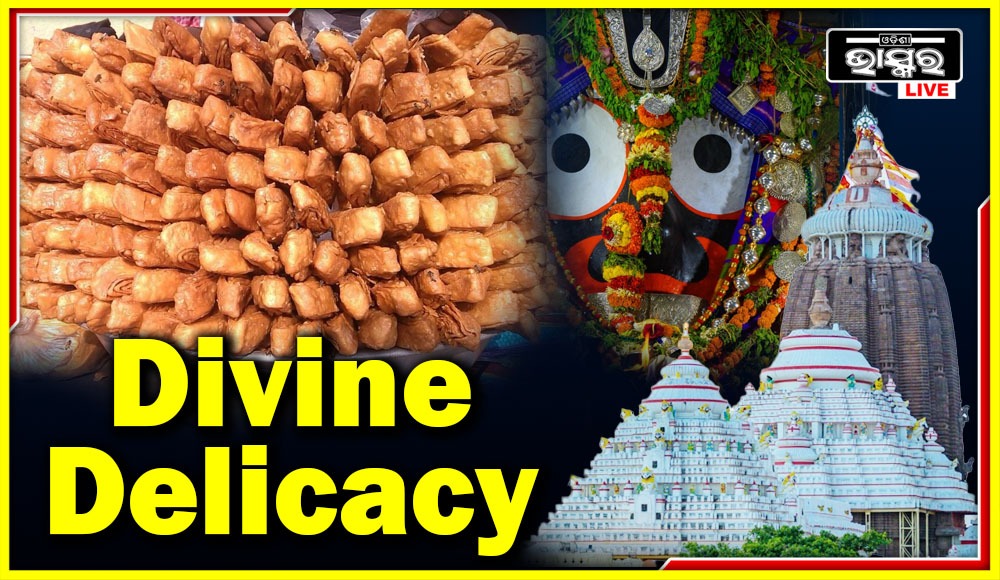Bhubaneswar: Odisha’s Puri district has the unique custom of discarding racism, casteism, or the stigma of leftovers when people share Mahaprasad together.
However, ‘Khaja’ owes its origin to Puri and its quality is far better in the pilgrim city compared to other places.
With its empirical divinity, Shree Jagannath culture always attracts not only devotees but also foodies.
Considered to be the largest kitchen in the world, a variety of at least 56 meals, or ‘Bhoga’ in Odia, are cooked in the kitchen every day for the deities, over a wood fire, and in earthen pots.
An integral part of the ‘Mahaprasad’ of the holy Trinity, the Khaja, also known as Feni, is the most lovable food among all.
While in Ananda Bazaar, the Khaja is sold per piece with the rate varying from Rs. 3 to Rs. 10 per piece depending on its size and quality, in the open market, it is sold per kg with the price varying from Rs. 75 to Rs. 80 per kg.
Khajas found here are dry from the outside and syrupy from the inside and can be stored for many days. The addition of refined wheat flour to the wheat helps in trapping the moisture, forms distinct layers, and allows the sweet syrup to spread evenly. All these local innovations made what the modern-day Khaja is known for.
It can be safely said that today Khaja of Puri is an inseparable part of Odia’s food legacy, even the food history of India.




Comments are closed.